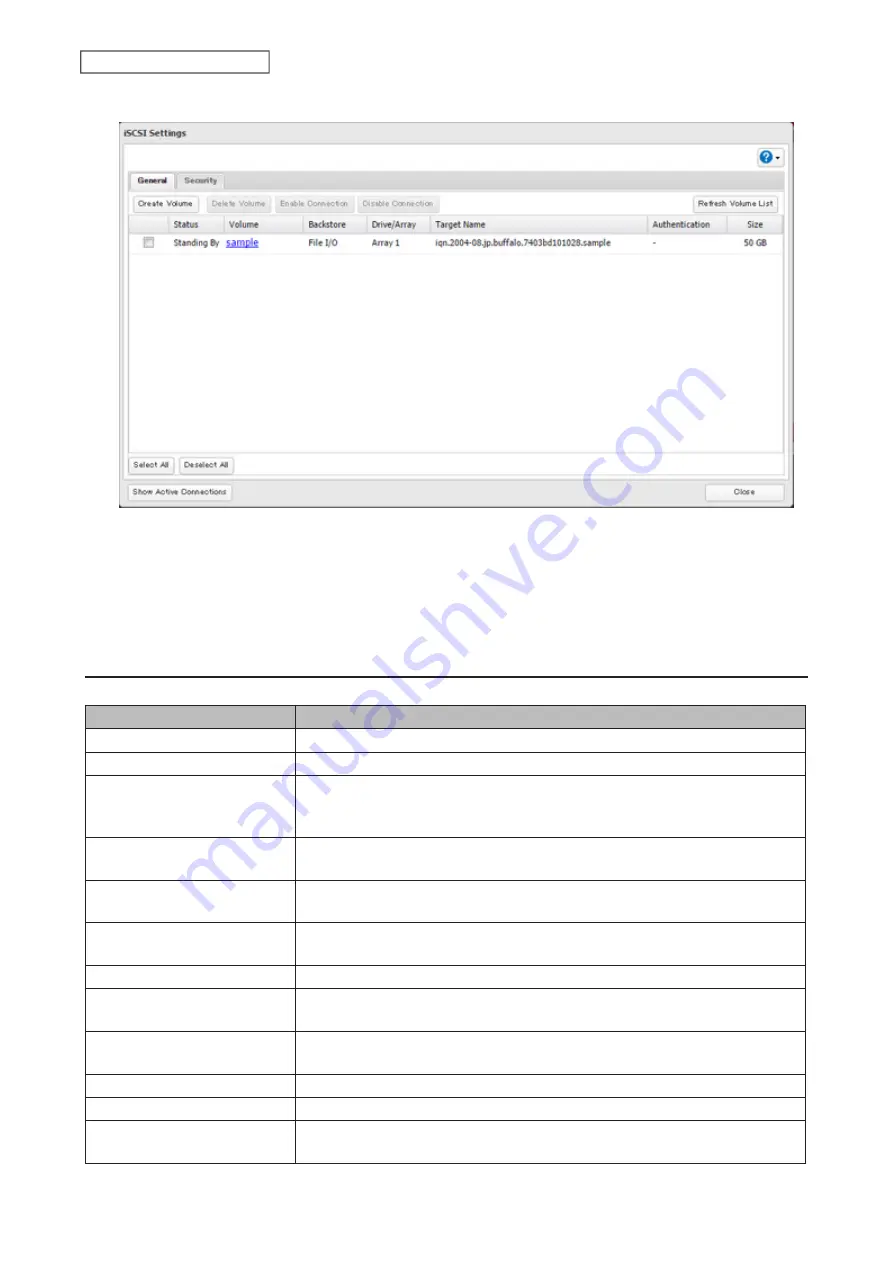
80
Chapter 4 Storage Management
3
Select the volume to delete and click
Delete Volume
.
4
Confirm that the volume is correctly selected on the screen and click
OK
.
5
The “Confirm Operation” screen will open. Enter the confirmation number, then click
OK
.
6
Click
OK
.
Advanced Settings
You can configure the following advanced parameters for each iSCSI volume.
Advanced Parameter
Description
HeaderDigest
Controls the HeaderDigest usage by the iSCSI target portal group endpoint.
DataDigest
Controls the DataDigest usage by the iSCSI target portal group (TPG) endpoint.
MaxConnections
Controls the usage of Multiple Connections per Session (MC/S). Initiator and
target negotiate the maximum number of connections requested and/or
acceptable.
InitialR2T
Turns on or off the default use of R2T (Ready to Transfer) for unidirectional and
the output part of bidirectional commands.
ImmediateData
Indicates whether the initiator and target have agreed to support immediate
data on this session.
MaxRecvDataSegmentLength
Maximum data segment length in bytes the initiator and target can receive in
an iSCSI Protocol Data Unit (PDU).
MaxXmitDataSegmentLength
Maximum data segment length in bytes that can be sent.
MaxBurstLength
Maximum iSCSI data payload in a Data-In or a solicited Data-Out iSCSI
sequence, in bytes.
FirstBurstLength
Maximum amount in bytes of unsolicited data an iSCSI initiator can send to the
target during the execution of a single SCSI command.
MaxOutstandingR2T
The R2T PDUs that can be in transition before an acknowledge PDU is received.
QueuedCommands
Maximum number of commands queued to any session of this target.
File I/O Write Sync
Synchronous file I/O provides reliability but slower performance. Asynchronous
writes are faster, but buffered data will be lost if a power outage occurs.
Summary of Contents for TeraStation 3010
Page 29: ...28 Chapter 3 File Sharing 3 Click Create User...
Page 32: ...31 Chapter 3 File Sharing 3 Click Add Group...
Page 71: ...70 Chapter 4 Storage Management 6 Click Edit under NAS Volume 7 Click Create Volume...
Page 88: ...87 Chapter 5 Backup 4 Enter the backup device access key and click OK 5 Click Add...
Page 111: ...110 Chapter 5 Backup 3 Click Select Backup Disk 4 Select the shared folder then click Use Disk...
Page 113: ...112 Chapter 5 Backup 7 Time Machine will count down from 120 seconds then backup will begin...
Page 125: ...124 Chapter 6 Cloud Services and Remote Access 5 Click Edit...
Page 137: ...136 Chapter 6 Cloud Services and Remote Access 4 Click the Options tab 5 Click Edit...
Page 147: ...146 Chapter 6 Cloud Services and Remote Access 4 Click the Options tab...
Page 148: ...147 Chapter 6 Cloud Services and Remote Access 5 Click Edit...
Page 176: ...175 Chapter 7 Advanced Features 11Click the NFS Rules tab 12Click Add...
Page 205: ...204 Chapter 7 Advanced Features 3 Click FQDN Mapping 4 Click Add...






























